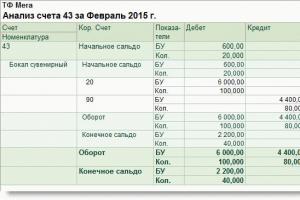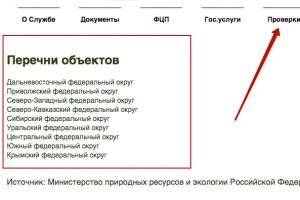The content of the article
COMPASS, a device for determining horizontal directions on the ground. Used to determine the direction in which a ship, aircraft, or land vehicle is moving vehicle; the direction in which the pedestrian is walking; directions to some object or landmark. Compasses are divided into two main classes: magnetic compasses of the pointer type, which are used by topographers and tourists, and non-magnetic ones, such as the gyrocompass and radio compass.
Compass card.
To determine directions, the compass has a card (Fig. 1) - a circular scale with 360 divisions (corresponding to one angular degree each), marked so that the countdown is from zero clockwise. The direction to the north (north, N, or S) usually corresponds to 0°, to the east (east, O, E, or B) - 90°, to the south (south, S, or S) - 180°, to the west (west , W, or Z) – 270°. These are the main compass points (cardinal points). Between them there are “quarter” directions: north-east, or NE (45°), south-east, or SE (135°), south-west, or SE (225°) and north-west , or NW (315°). Between the main and quarter directions there are 16 “main” points, such as north-north-east and north-north-west (there were once 16 more points, such as “north-shadow-west”, called simply points).
MAGNETIC COMPASS
Operating principle.
In a direction-indicating device, there must be some reference direction from which all others are measured. In a magnetic compass, this direction is the line connecting the North and South Poles of the Earth. The magnetic rod will set itself in this direction if it is hung so that it can rotate freely in the horizontal plane. The fact is that in the Earth’s magnetic field, a rotating pair of forces acts on the magnetic rod, setting it in the direction magnetic field. In a magnetic compass, the role of such a rod is played by a magnetized needle, which, when measured, is itself set parallel to the Earth’s magnetic field.
Pointer compass.
This is the most common type magnetic compass. It is often used in a pocket version. A pointer compass (Fig. 2) has a thin magnetic needle mounted freely at its midpoint on a vertical axis, which allows it to rotate in a horizontal plane. The northern end of the arrow is marked, and the card is fixed coaxially with it. When measuring, the compass must be held in your hand or mounted on a tripod so that the plane of rotation of the arrow is strictly horizontal. Then the north end of the arrow will point to the north magnetic pole of the Earth. A compass adapted for topographers is a direction-finding instrument, i.e. device for measuring azimuth. It is usually equipped with a telescope, which is rotated until it is aligned with the desired object, in order to then read the azimuth of the object using the card.
Liquid compass.
The liquid compass, or floating card compass, is the most accurate and stable of all magnetic compasses. It is often used on sea vessels and is therefore called shipboard. The designs of such a compass are varied; V typical version it is a “pot” filled with liquid (Fig. 3), in which an aluminum cartridge is fixed on a vertical axis. On opposite sides of the axis, a pair or two pairs of magnets are attached to the card from below. In the center of the pot there is a hollow hemispherical protrusion - a float, which relieves pressure on the axle support (when the pot is filled with compass liquid). The axis of the card, passed through the center of the float, rests on a stone thrust pad, usually made of synthetic sapphire. The thrust bearing is fixed on a fixed disk with a “course line”. There are two holes at the bottom of the pot through which liquid can flow into the expansion chamber, compensating for changes in pressure and temperature.
The card floats on the surface of the compass liquid. The liquid, in addition, calms the vibrations of the card caused by pitching. Water is not suitable for a ship's compass because it freezes. A mixture of 45% ethyl alcohol with 55% distilled water, a mixture of glycerin with distilled water, or high-purity petroleum distillate is used.
The compass bowl is cast from bronze and equipped with a glass cap with a seal that eliminates the possibility of leakage. An azimuth, or direction-finding, ring is fixed in the upper part of the pot. It allows you to determine the direction to various objects relative to the ship's course. The compass bowl is fixed in its suspension on the inner ring of the universal (universal) joint, in which it can rotate freely, maintaining a horizontal position, in rolling conditions.
The compass bowl is fixed so that its special arrow or mark, called the course, or a black line, called the course line, points to the bow of the vessel. When the ship's course changes, the compass card is held in place by magnets, which invariably maintain its north-south direction. By shifting the heading mark or line relative to the card, you can control course changes.

COMPASS CORRECTION
A compass correction is the deviation of its readings from the true north (north). Its causes are magnetic needle deviation and magnetic declination.
Deviation.
The compass points to the so-called compass, and not to the magnetic north (north magnetic pole), and the corresponding angular difference in directions is called deviation. It is caused by the presence of local magnetic fields superimposed on the Earth's magnetic field. A local magnetic field can be created by the hull of a ship, cargo, large masses of iron ore located near the compass, and other objects. The correct direction is obtained by taking into account the deviation correction in the compass readings.
Ship magnetism.
Local magnetic fields created by the ship's hull and covered by the concept of ship magnetism are divided into variable and constant. Alternating ship magnetism is induced in the steel hull of the ship by the Earth's magnetic field. The intensity of alternating ship magnetism varies depending on the ship's course and geographic latitude. Permanent ship magnetism is induced during the construction of the ship, when, under the influence of vibration caused, for example, by riveting operations, steel cladding becomes a permanent magnet. The intensity and polarity (direction) of a ship's permanent magnetism depend on the location (latitude) and orientation of the ship's hull during its assembly. Permanent magnetism is partially lost after the ship is launched and after it has been in rough seas. In addition, it changes somewhat during the aging process of the hull, but its changes significantly decrease after the vessel has been in use for a year.
Ship magnetism can be decomposed into three mutually perpendicular components: longitudinal (relative to the ship), transverse horizontal and transverse vertical. Deviations of the magnetic needle caused by the ship's magnetism are corrected by placing permanent magnets parallel to these components near the compass.
Binnacle.
A ship's compass is usually mounted in a universal joint on a special stand called a binnacle (Fig. 4). The binnacle is rigidly and securely attached to the deck of the ship, usually on the centerline of the ship. Magnets are also installed on the binnacle to compensate for the influence of ship magnetism, and a protective cap for the compass with an internal card illuminator is attached. Previously, the binnacle was made in the form of a carved figure made of wood, but on modern ships it is simply a cylindrical stand.
Magnetic declination.
Magnetic declination is the angular difference between the magnetic and true north, due to the fact that the Earth’s magnetic north pole is displaced by 2100 km relative to the true, geographic one.
Declination map.
Magnetic declination varies over time and from point to point on the earth's surface. As a result of measurements of the Earth's magnetic field, declination maps were obtained, which give the magnitude of the magnetic declination and the rate of its change in different areas. The contours of zero magnetic declination on such maps, emanating from the north magnetic pole, are called agonic lines or agons, and the contours of equal magnetic declination are called isogonic or isogon.
Accounting for compass corrections.
Currently in use whole line different ways taking into account compass corrections. All of them are equally good, and therefore it is enough to give as an example only one, adopted by the US Navy. Deviations and magnetic declinations to the east are considered positive, and to the west - negative. Calculations are made using the following formulas:
Magn. eg = Comp. eg + Deviation,
Comp. eg = Magn. eg + Declension.
Directions at sea can be determined not only relative to the true meridian, but also relative to the magnetic one.
Let us depict two meridians on the plane of the observer's true horizon: the true N I and the magnetic N M direction DP, OK and the direction from the ship to the coastal landmark OM. Then in this figure N AND OK is the true heading of the ship, and the angle N AND OM is the true bearing. By analogy, it is believed that the angle N M OK is the magnetic heading (MC), and the angle N M OM is the magnetic bearing of the object M. Thus, the magnetic heading of the ship is the angle at the center of the compass, measured from the northern part of the magnetic meridian to the direction of the bow of the ship's DP along clockwise from 0 to 360 0. In the same way, the magnetic bearing of an object is the angle at the center of the compass, measured from the northern part of the magnetic meridian to the direction towards the object clockwise from 0 to 360 0.
Ship magnetism
The steel structure of the ship's hull and plating acquire magnetic properties from the moment of construction. In the Earth's magnetic field, all longitudinal, transverse and vertical connections of the ship are magnetized unequally. In addition, ship iron is usually divided magnetically into “hard” and “soft”. The first has the properties permanent magnets. The permanent magnetism acquired by the vessel during construction lasts for years. Marine iron, which is soft in a magnetic sense, does not “retain” the magnetic state for a long time; it has inductive magnetism, depending on the position of the ship's hull relative to the magnetic meridian. Thus, the magnetic needle of a compass installed on a ship is influenced by the magnetic forces of hard and magnetically soft iron, and their effects are different. In addition, as a result of the action of magnetic forces arising from the magnetic field created by various operating ship units and current circuits, the compass needle deviates from the magnetic meridian.
The vertical plane passing through the poles of the magnetic compass needle on a ship, which has free rotation around a vertical axis, is called the plane of the compass meridian at a given point on the ship. Thus, the compass meridian is an imaginary line of intersection of the observer’s true horizon plane with the plane of the compass meridian passing through a given point on the ship. The angle in the plane of the observer's true horizon between the magnetic and compass meridians is called the deviation of the magnetic compass. This angle is measured from the northern part of the magnetic meridian to W or E from 0 to 180 0. 
The deviation is called eastern if the northern part of the compass meridian deviates from the northern part of the magnetic meridian to the east; if the northern part of the compass meridian deviates from the northern part of the magnetic meridian to the west, then the deviation is called western. Eastern deviation is assigned a plus sign, western deviation - a minus sign.
A significant deviation of the magnetic compass creates great inconvenience in practical work. Therefore, deviations are eliminated on ships by artificial creation in the center of the compass there are forces of the same nature, equal in magnitude and opposite in direction to the forces causing deviation. Eliminating magnetic compass deviation on a ship is a labor-intensive job, usually performed by deviator specialists. After the deviation is eliminated, the residual deviation of the ship's compasses is determined, which usually does not exceed 2-3 0. It is found from observations on eight equally spaced main and quarter courses, and then its values for compass courses after 10 or 15 0 are calculated using special formulas.
There are many ways to determine deviation from observations: by bearings of celestial bodies; by bearings of a distant object; by mutual bearings; along the lines. The last method is the simplest and most accurate. The essence of the method is as follows. Following one of the compass courses on a magnetic compass, they cross a line of leading marks whose magnetic direction is known. At the moment of intersection of the alignments, the compass bearing of them is noted and, thus, it is possible to determine the value of the deviation for a given compass course. They do the same thing when crossing the target on a different compass course. Doing this the required number of times, the deviation value in each case is determined by the formula:
Δ= MP i - CP i
The physical essence of the fact that deviation has different values for each compass course is not difficult to understand, remembering the fact that the magnetic field of a ship will be different depending on the location of its hull relative to the lines of force of the Earth’s magnetic field, i.e., on the ship’s heading.
Rules technical operation the destruction of deviation and determination of the residual deviation of the magnetic compass are provided at least once every six months.
Compass courses and bearings
Directions at sea can be determined not only relative to the true or magnetic meridian, but also relative to the compass.
The figure above shows three meridians on the plane of the observer’s true horizon: true N and magnetic N M and compass N k; direction DP of the vessel OK and direction from the vessel to the shore landmark OM. Angle N and OK - the true heading of the ship, angle N M OK - the magnetic heading of the ship and angle N K OK - the compass heading of the ship; angle N and OM - true bearing of the object M, angle N m OM - magnetic bearing of the object M and angle N K OM - compass bearing of the object M. So, the compass heading of the ship is the angle at the center of the compass, measured from the northern part of the compass meridian to the direction of the bow The vessel's DP is clockwise from 0 to 360 0. Similarly, the compass bearing of an object is the angle at the center of the compass, measured from the northern part of the compass meridian to the direction towards the object clockwise from 0 to 360 0.
The combined action of the forces of earthly and ship magnetism leads to the fact that the magnetic needle deviates from the true meridian by a certain total angle, called the magnetic compass correction and denoted ΔMK. By analogy with declination and deviation, the compass correction is called eastern, assigning it a plus sign, or western (minus sign), depending on whether the northern part of the compass meridian is deviated to the east or west from the northern part of the true meridian.
The Earth's magnetic field can be detected using a magnetic needle. If the arrow is hung so that it can rotate freely in the horizontal and vertical planes, then at each point on the earth’s surface, under the influence of magnetic forces, it tends to take a very specific position in space. The Earth's magnetic field exists on the surface, underground and in space. The earth's magnetic field is caused by processes within its crust and in outer space and is closely related to the activity of the Sun.
The Earth's magnetic field strength is on average 40 A/m.
In general, the Earth's magnetic field is non-uniform, but in the limited space of a ship it can be considered uniform.
Let us decompose the tension, as a vector, into individual components, called the elements of earthly magnetism. These include (see figure) the horizontal component of the Earth's magnetic field strength H, vertical component Z and magnetic declination d– horizontal angle formed by the direction of the true meridian ON and component H, which lies in the plane of the magnetic meridian. In addition to these elements, the magnetic field strength vector includes magnetic inclination I– vertical angle between the horizontal plane and the direction of the earth's magnetism vector.
From the figure we can establish the following connection between the elements of terrestrial magnetism:
If you need to determine the projection of the vector of terrestrial magnetism onto the direction of the true meridian or the first vertical, then you can use the following equalities
Lines connecting equal values of H and Z are called isolines (lines of equal strength). Magnetic declination isolines are isogons, magnetic declination isolines are isoclines. Such lines are drawn on a special map of terrestrial magnetism. Isoclins of zero inclination form the magnetic equator.
Let us decompose the vector of terrestrial magnetism into ship coordinate axes:

Projections of the earth's magnetic field strength onto ship axes:
The horizontal component, which determines the operation of the magnetic compass, varies in different places on the globe from zero (at the magnetic poles) to 32 A/m at the southern tip of Asia. The decrease in this component occurs in the direction from the equator to the poles.
The vertical component of the Earth's magnetic field strength varies from zero (at the magnetic equator) to 56 A/m in the polar regions.
Topic 3 (2 hours) magnetic field of a ship. Poisson equations and their analysis.
The ship's hull, its engine, and ship's mechanisms are made of materials that have some residual magnetization. In addition to the residual permanent magnetization acquired during construction, the ship's hull and its mechanisms have not lost the ability to be magnetized in the Earth's magnetic field, which constantly affects the ship. Thus, two components can be distinguished in ship iron: the hard component is magnetized during construction and remains constant, the soft component is magnetized in the Earth’s magnetic field. Permanent ship magnetism and the magnetization of soft ship iron affect any magnetic device on the ship. In this case, it is customary to say that the ship’s magnetic field operates in the space surrounding the ship.
The ship with all its equipment is a body of very complex shape, so it is difficult to count on it being magnetized uniformly. However, the magnetization of a ship during construction and during subsequent periods of its voyage occurs in the weak magnetic field of the Earth, and moreover, the magnetic susceptibility of the ship as a whole is low. Therefore, the inhomogeneity of its magnetization turns out to be insignificant; it can be neglected and proceed from the average value of magnetization for the entire vessel as a whole.
Therefore, we can use Poisson’s theorem on the uniform magnetization of bodies.
Poisson's theorem is formulated as follows: magnetic potential U of a uniformly magnetized body is equal to the scalar product of the body’s magnetization vector taken with a minus sign  on the gradient of the attractive force potential
on the gradient of the attractive force potential  created by the mass of a given body:
created by the mass of a given body:
Where: -  - components of the ship’s magnetization along the ship’s axes
- components of the ship’s magnetization along the ship’s axes
 - derived quantities V along these axes, proportional to the potential of attraction caused by the mass of the vessel.
- derived quantities V along these axes, proportional to the potential of attraction caused by the mass of the vessel.
To move from the potential to the projections of the magnetic field strength onto the ship’s axes, we differentiate (16) with respect to the variables x, y, z , Where J– constant value:

The magnetization vector of the body is expressed by formula (16). Let's break it down into components along the ship's axes:
Where: X, Y, Z - projections onto these axes of the magnetizing field - the Earth’s magnetic mole.
Let's substitute these values into the previous three equations:

Let us open the brackets in each of these equations and introduce the notation
|
|
Using these notations, we can write it like this:

These equations express the projection of the magnetic field strength of the ship at point O (see figure). If there is a compass at point O, then it will show not only the ship’s magnetism, but also the influence of the Earth’s magnetic field. Let us add algebraically the projections of the field strengths of the ship and the Earth to express their joint action:

where with a prime are projections on the ship’s axes of the total magnetic field, without a prime are projections on the same axes of the Earth’s magnetic field, and with a zero are projections of the ship’s magnetic field strength. From here:
|
|
These equations are called Poisson's equations, since they were derived on the basis of Poisson's theorem on the uniform magnetization of bodies.
a, b, c,… k– Poisson parameters. They characterize soft iron: its magnetic qualities, shape and size, location relative to the center of the compass.
Components P, Q, R express the magnetic field of permanent ship magnetism caused by the action of hard iron.
All these quantities practically do not change for a given compass and for a given magnetic state of the ship. If large masses of iron are moved on a ship relative to the compass or the compass itself is moved, then these values will change.
The ship's heading does not affect these values; magnetic latitude has a very weak effect only on the Poisson parameters. Shaking the ship and loading the ship affect its magnetic state.
All sea vessels are equipped with magnetic compasses. The main advantage is their high degree of autonomy and reliability with the simplicity of the device. The main disadvantage is the low accuracy of determining directions. Sources of errors are: inaccurate knowledge of magnetic declination, deviation, inertia and insufficient sensitivity of the magnetic needle system to the Earth's magnetic field. Errors especially increase when pitching.
Typically, two magnetic compasses are installed on a ship - main(GMC) to determine the position of the vessel and travel(PMK) - for controlling the ship. The MMC is installed in the DP, usually on the upper bridge in a place of best protection from the influence of the ship's magnetic field; the PMC is installed in the wheelhouse. Often, instead of two magnetic compasses, a ship is equipped with one compass on the upper bridge, but with optical transmission of readings to the wheelhouse.
The reliability of determining directions using a magnetic compass largely depends on the accuracy of knowledge of its deviation.
A large deviation leads to the fact that the magnetic compass stops responding to the Earth’s magnetic field and, in fact, is no longer a heading indicator. Therefore, the deviation of the magnetic compass must be compensated by creating an artificial magnetic field. This process is called destruction of deviation. Under normal sailing conditions, the destruction of magnetic compass deviation is carried out at least once a year in special ways, studied in the course of deviation. The deviation remaining after destruction is called residual deviation; it must be determined by navigators and should not be more than 3° at the main compass and 5° at the directional compass. The residual deviation must be determined:
1) after each destruction of deviation,
2) after repair, drydocking, demagnetization of the vessel;
3) after loading and unloading cargo that changes the magnetic field of the ship;
4) with a significant change in magnetic latitude;
5) when the actual deviation differs from the table deviation by more than 2°.
The essence of determining residual deviation is to compare the measured compass bearing with the known magnetic bearing of the same landmark:
Since deviation depends on the ship’s heading, it is determined on 8 equally spaced main and quarter compass courses. After that, for each magnetic compass its own deviation table is calculated after 10° of the compass course. An example of a residual deviation table is shown in table. 1.2.
Table 1.2.
| QC | d | QC | d | QC | d | QC | d |
| 0° | +2.3° | 100° | -3.3° | 190° | -0.7° | 280° | +4.5° |
| +1,7 | -3,7 | +03 | +4,3 | ||||
| +1,3 | -4,0 | +1,3 | +4,0 | ||||
| +1,0 | -4,3 | +2,0 | +3,7 | ||||
| +0,5 | -4,0 | +2,7 | +3,5 | ||||
| -3,7 | +3,5 | +3,0 | |||||
| -0,7 | -3,3 | +4,0 | +2,7 | ||||
| -1,5 | -2,5 | +4,3 | +2,5 | ||||
| -2,0 | -1,7 | +4,5 | +2,3 | ||||
| -2,7 |
The residual deviation is determined by two observers. It must be borne in mind that after each turn the magnetic compass card comes to the meridian in 3-5 minutes and therefore the compass cannot be used at this time.
Let's consider the main methods for determining residual deviation.
 1. On target(Fig. 1.26).
1. On target(Fig. 1.26).
This is the most accurate method. Some ports even have special deviation points. The vessel crosses the target using each of the 8 main and quarter compass courses and at the moment of crossing the target, the navigator measures the compass bearing of this target. Magnetic bearing is calculated using the formula (1.17) MP=IP-d. IP is taken from the map, d is also determined from the map and reduced to the year of voyage.
The steel structure of the ship's hull and its plating acquire magnetic properties from the moment of construction. In the Earth's magnetic field, all longitudinal, transverse and vertical connections of the ship are magnetized unequally. In magnetic terms, ship iron is usually divided into hard and soft.
Solid ship iron has the property of permanent magnets. The permanent magnetism acquired by the vessel during construction lasts for years. Marine iron, which is soft in a magnetic sense, does not “retain” the magnetic state for a long time. It has inductive magnetism, depending on the position of the ship’s hull relative to the magnetic meridian.
Rice. 20.
Thus, the magnetic needle of a compass installed on a ship is influenced by the magnetic forces of hard and magnetically soft iron, and their effects are different. In addition, as a result of the action of magnetic forces arising from the magnetic field created by various operating ship units and current circuits, the compass needle deviates from the magnetic meridian. The vertical plane passing through the poles of a magnetic needle suspended from the center of gravity on a ship, having free rotation around a vertical axis, is called plane of the compass meridian at a given point on the vessel. Compass meridian- this is an imaginary line of intersection of the observer’s true horizon plane with the plane of the compass meridian passing through a given point on the ship.
The angle in the plane of the observer's true horizon between the magnetic and compass meridians is called magnetic compass deviation(b). This angle is measured from the northern part of the magnetic meridian to O st or W from 0 to 180°. The deviation is called core (eastern), if the northern part of the compass meridian deviates from the northern part of the magnetic meridian to the east, western (west), if the northern part of the compass meridian deviates from the northern part of the magnetic meridian to the west. The main deviation is assigned a “plus” sign, and the leading deviation is assigned a “minus” sign (Fig. 20). The magnitude and sign of the deviation depend on the influence that the ship’s magnetic field together with the earth’s magnetic field has on the magnetic compass needle.
Based on the nature of their occurrence, they distinguish between semicircular, quarter and roll deviations. The semi-circular is created by magnetically hard iron, the quarter-circular - by soft, heeling occurs during the rocking of the ship.
Significant deviation creates great inconvenience when using a magnetic compass. Therefore, on ships, deviation is eliminated by artificially creating forces in the center of the compass that are identical in nature, equal in magnitude and opposite in direction to the forces causing deviation. To do this, bars of hard and soft iron are placed near the compass in special devices. The compass will be an autonomous and reliable heading indicator if the forces causing deviation are compensated.
Eliminating compass deviation on a ship is a labor-intensive job, usually performed by deviation specialists, and sometimes by navigators.
After eliminating the deviation of the ship's magnetic compasses, determine residual deviation, which usually does not exceed 2-3°. It is found from observations at eight equally spaced main and quarter courses.
To determine the residual deviation of compasses, there is
Several ways. Most often it is determined by:
Svoram;
Bearing of a distant object;
Mutual bearings;
Bearings of celestial bodies.
The simplest and most accurate way is to determine the deviation along the alignments. To do this, following one of the courses, they cross the line of leading signs, the magnetic direction of which is known. At the moment of intersection of the alignments, the compass bearing of the alignments is noted using the magnetic compass.
The deviation on this course is determined from the relations:
B = WMD - OKP; b = MP -KP,
Where OMP is the magnetic bearing reading;
OKP - compass bearing reference.
Having determined the residual deviation, a deviation table for compass courses every 15 or 10° is calculated using special formulas (Table 1).
The technical operation rules provide for the destruction of magnetic compass deviation at least once every six months. If the ship carried out renovation work using electric welding, as well as after loading cargo that changes the magnetic state of the vessel ( metal constructions, pipes, rails, etc.), it is necessary to additionally destroy the deviation. In these cases, when issuing a mission plan to the captain, the time required to destroy and determine the compass deviation should be taken into account. Typically, deviation work requires 2-4 hours. The vessel is brought into a stowed state, the holds are closed, cargo booms they are stowed in a stowed manner, the deck cargo is lashed, and then they go out to the roadstead, equipped with special gates, and the deviator carries out all the work to eliminate the deviation.










